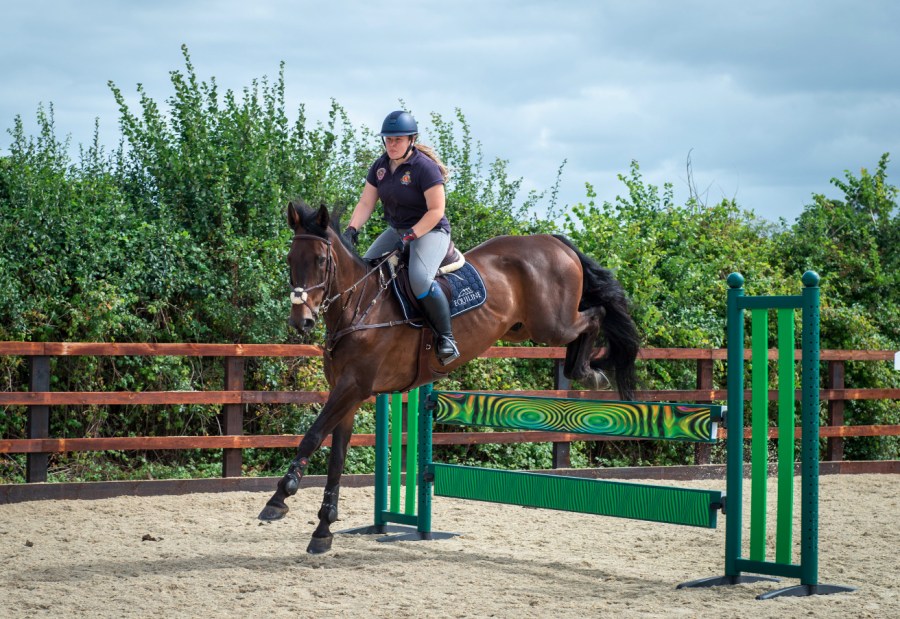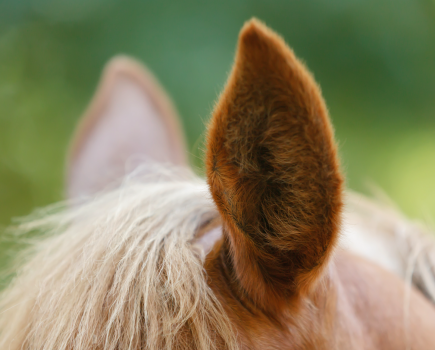What springs to mind when you think about safety around horses? Chances are, one of your first thoughts is around riding hats and the second around body protectors. This makes sense, of course, because a hat that’s up to the correct standard can help to reduce the severity of a fall or impact on the skull and brain. Similarly, body protectors help reduce the blow to the torso and internal organs.
Injuries in these areas are more likely to be life threatening, but that doesn’t mean other areas of your body couldn’t benefit from a little extra protection too — your hands and arms being two prime examples. As part of BETA’s Summer of Safety campaign, executive director Claire Williams and chief medical officer Dr Diane Fisher are sharing advice for staying safe both in and out of the saddle
Hands: ‘Friction burns are just plain nasty’
When it comes to riding or working a horse from the ground, wearing gloves is recommended to promote good grip regardless of the weather conditions, sweat or anything else — but putting on a pair of gloves can do so much more than that.
As well as helping you maintain contact with the reins, gloves will also help to prevent blisters and injuries caused by friction while in the saddle.
When working with a horse or pony on the ground, wearing gloves can help prevent more serious injuries too.
Wearing gloves when leading, lungeing and long-reining a horse can help prevent friction burns. If the horse becomes strong or pulls away, you’ll instinctively want to hold onto the rope rather than letting go. This scenario commonly causes incredibly painful friction burns on un-gloved hands, which can be easily avoided by wearing the correct kit.
“Friction burns are just plain nasty,” says Dr Diane, a major trauma and emergency medicine consultant who is also a horse rider. “They are really, really painful and take ages to heal. Think of them like a cross between a burn and abrasion.”
Wearing jewellery: ‘Serious injury to your digits’
Many riders wear jewellery, but this is also an area that can cause injury. Rings can cause real issues if they become caught because they are usually hard to break. Unlike a finer piece of jewellery that would snap if caught, rings don’t tend to, and this can have awful consequences for your fingers.
“Rings can cause serious injury to your digits,” adds Diane. “If they get caught, they can deglove the fingers, which means you’re left with pretty much just bone on your hand. The rest of the tissue, including nerves and tendons, is stripped away from the bone —just like taking off a glove.”
Shoulder injuries: ‘Long-lasting effects’
At the top of the arm you have a ball and socket joint that provides free movement. There’s also the collarbone or clavicle that attaches to the top of the shoulder joint. Shoulder injuries are common in riders.
“When a rider falls, they can land with a lot of force. The shoulder is often the first part that hits the ground as we tend to land on our sides,” explains Diane.
“A broken clavicle (collarbone) is a fairly common injury when it comes to riding, but we also see more complicated clavicle injuries where all the ligaments holding the clavicle to the shoulder snap or stretch, making it very unstable.
“Add into the mix some shoulder dislocations and humeral fractures [this is the long bone in your arm] — all of these can be open which means the bone can poke out through the skin it. These injuries can have long-lasting effects.”
Protection for shoulders
Falling off and incidents on the ground are part and parcel of handling and riding horses, and while it’s impossible to prevent all injuries in life — let alone in a high-risk sport like ours — there is something that can help to reduce the severity of shoulder impacts: shoulder protectors.
“Shoulder protectors don’t come as standard with body protectors, but they’re definitely worth considering when you invest in a body protector,” states Claire Williams. “As with body protectors, these should feature a level or standard to ensure that they’re made in line with the standards here, so you know what you’re buying.”
Claire refers to a study by Michael R. Whitlock, which was connected to injuries in riders during the cross-country phase of eventing and the importance of safety equipment.
“He observed that shoulder protectors made a significant impact on the reduction of injury when riders sustained falls where they were expected to have damaged their shoulder,” says Claire.
“It makes sense that this is the case. When you use a shoulder protector, you’re putting layers of foam between you and whatever you hit, which has been created to absorb the impact and reduce what you feel.”
Report your riding falls and horsey accidents
 At last year’s Your Horse Live, BETA launched an accident reporting form to help collate and learn from accidents involving horses, both on the ground or as a result of a fall. Information gathered via the form will be studied and used to help inform the manufacturers of safety equipment, helping support the continued evolution of safety equipment in line with the needs of horse owners and riders.
At last year’s Your Horse Live, BETA launched an accident reporting form to help collate and learn from accidents involving horses, both on the ground or as a result of a fall. Information gathered via the form will be studied and used to help inform the manufacturers of safety equipment, helping support the continued evolution of safety equipment in line with the needs of horse owners and riders.
To access the BETA Rider Accident & Equipment Report Form, scan the QR Code (left) or find it here.
For more information on BETA, see www.beta-uk.org. To get involved with the Summer of Safety, follow BETA on Instagram and Facebook
Find out what’s inside the latest issue of Your Horse
Check out our latest subscription offer









